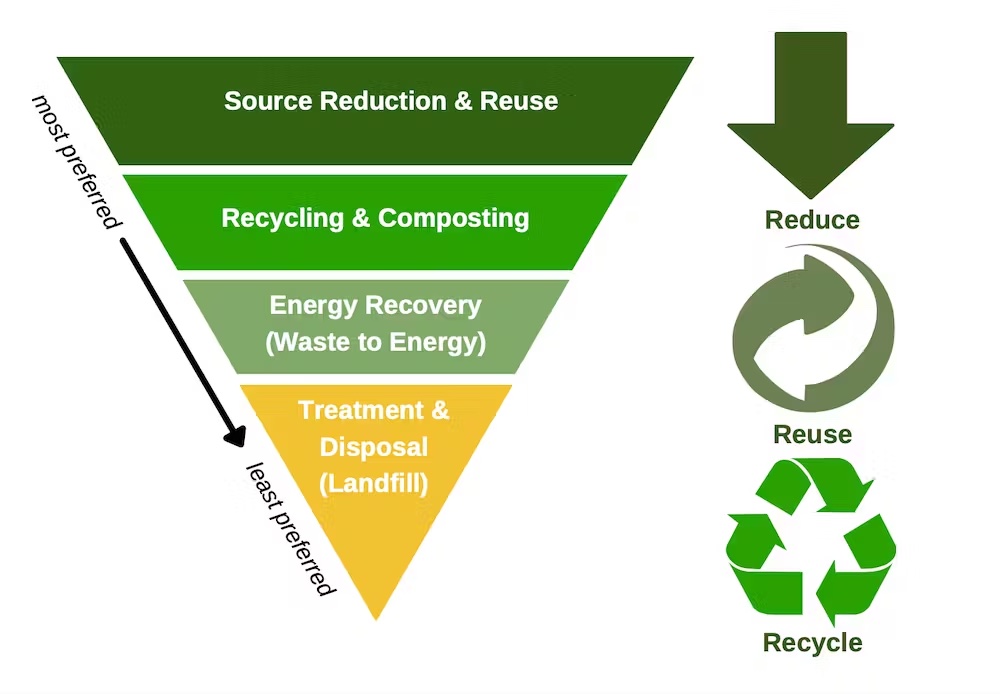Is Weight Reduction Always CO2 Reduction?
Central to the battle against global warming, and in line with the goals of the Paris Agreement, is the challenge of reducing greenhouse gas emissions in the atmosphere, especially carbon dioxide (CO2) emissions. Over the past decade, among the many strategies emerging in the realms of science and technology, a prevalent one has been as follows: the reduction of carbon dioxide in manufacturing processes, with at the forefront of this the plastics industry. It’s widely believed that by reducing the weight of plastic products, we inherently cut back on CO2 emissions, as less raw material and energy are required. But is this assumption rooted in reality? This article gives an overview of the nuanced relationship between plastic weight and emissions trends associated with their production, while at the same time exploring the intricacies of CO2 reduction and offering insights into sustainable practices.
The Surface Logic
The formation of our understanding begins with the CO2 reduction approach. The ultimate goal is to minimise the share of released carbon dioxide to the atmosphere, emissions that predominantly arise from human activities. As a result of extensive research in the field of sustainable energy, a pressing question has emerged: how can we effectively bridge the gap between theoretical understanding and tangible reduction of carbon dioxide in practice?
There are multiple approaches for addressing CO2 reduction. On google you’ll find a lot about electrochemical reduction, addressing the challenge by providing a method to use or store the CO2. We focus on the reduction in relation to product design in this blog post. In the context of plastics, the logic appears uncomplicated: if a plastic product is manufactured using less material and thus weighs less, it should naturally lead to lower CO2 emissions during its creation. However, we should ask ourselves, is this assumption always accurate? The connection between the weight of plastic products and their carbon footprint seems straightforward:
1. Less Material
The most direct benefit of lighter plastic products is the reduced raw material consumption. This means:
- Fewer Extractions: With less plastic produced, fewer resources are extracted from the Earth, resulting in reduced environmental degradation and habitat loss.
- Decreased Processing: Less material needs less processing. This can cut down on the energy and water used in refining and preparation phases.
2. Energy Savings
Reduced weight usually signals reduced energy requirements at multiple stages:
- Production: Manufacturing lighter products often consumes less energy, especially when it comes to heating and moulding processes.
- Transportation: Lighter products mean lighter loads. Whether transported by trucks, ships, or planes, less fuel is consumed, leading to decreased emissions.
- Disposal: Lighter plastics could, theoretically, require less energy for recycling or other disposal methods, although this can vary based on the type of plastic and disposal technique.
3. Waste Reduction
Weight directly correlates with volume in many plastic products. Thus, lightweight plastics could lead to:
- Less Landfill Space: Reduced volume means we would need less space to dispose of these products.
- Decreased Pollution: With less waste, there’s a reduced chance of plastics ending up in natural habitats, decreasing soil and water pollution.

The U.S. EPA’s current waste management hierarchy, and a visual depiction of the three R’s framework. Source: The Conversation.
What is Electrochemical CO2 Reduction?
Electrochemical reduction is the groundbreaking approach of converting CO₂ back into usable energy sources. The catalysts employed in this process, particularly on copper surfaces, have shown a surprising proficiency for the electrochemical reduction of carbon dioxide.
Dr. Seifitokaldani, a scientist who for the first time, emphasized the significant role that dioxide materials play in enhancing this process. Due to the unique properties of these materials, the conversion of CO₂ in aqueous solutions has achieved higher energy efficiency than traditional methods, which leads to achieve a large return.
How do these catalysts achieve such results? The answer lies in the intricacies of the electrochemical CO₂ reduction process. Electrochemical reduction, especially the electrochemical reduction of CO₂ to ethylene, formic acid, and other valuable products, relies heavily on the catalysts’ ability to modulate the reaction. For CO₂ reduction to be efficient, the energy input must be higher than the output. Yet, it’s worth noting that certain methods have shown energy input to be lower than the desired output, indicating room for improvement.
One of the highlights of Dr. Seifitokaldani’s research is the use of electrocatalytic reduction. For a long time, the reduction of CO₂, especially to CO and other by-products, was carried out using methods that lacked energy efficiency. However, with advancements in electrochemical reduction techniques and the right choice of catalysts, the conversion of CO₂ now holds the promise of mitigating our reliance on non-renewable energy sources.
Digging Deeper: Not All Reductions Are Equal
However, while the above points lay a foundation for the assumption, the relationship between plastic weight and CO2 emissions is more nuanced. As a result the choice of production process, durability, recyclability, and consumer behaviour all play significant roles. In the presence of advanced science and technology, many countries are revisiting their plastic production processes.
1. Production Complexity
It’s not always about quantity but quality too.
- Advanced Techniques: Producing thinner or lighter plastics might demand advanced manufacturing techniques, sometimes consuming more energy than traditional methods.
- Additives and Treatments: To maintain the strength of thinner plastics, manufacturers might use additional chemicals or treatments, which could have their own environmental impact and decrease recyclability.
2. Durability Concerns
While lightweight might sound beneficial, it could be a double-edged sword.
- Shorter Product Life: Lighter plastics might be prone to breaking or wear-and-tear, requiring consumers to replace them more frequently. So using less material only works with an optimised design for its intended functions.
- Increased Production: Ironically, this could lead to more production in the long run, negating the initial benefits of reduced weight.
3. Recyclability Issues
Not all plastics are created equal, especially when it comes to recycling.
- Complex Structures: Some lightweight plastics, like multi-layered packaging, are challenging to recycle because they combine different types of plastics.
- Contamination Risks: Blended or mixed plastics can contaminate recycling streams, making the process inefficient or even leading to the rejection and disposal of large batches.
“Focusing solely on weight reduction is sustainability 1.0 and outdated. This resulted in non recyclable multilayer plastics, creating a new problem.”
Bart Bleijerveld – Packaging expert at Better Future Factory
In Practise
There have been success stories, notably within the European Union, which has pioneered certain regulations in this domain. As shown in various reports in these scenarios this is the case:
1. Beverage Bottles
Many companies have successfully reduced the weight of plastic bottles, using less material without compromising the bottle’s functionality. Another example is with champagne bottles, however who wants to drink champagne from a plastic bottle, this is where consumer percetption comes in.
2. Packaging
Certain lightweight plastic packaging solutions in the Netherlands have proven both effective in protection and efficient in material use.
3. Bottle to pouch by Better Future Factory
A good example also exists at Better Future Factory. We have reimagined Hum Nutrition’s bulk packaging as part of a revamped packaging strategy. The previous design, displayed left, consisted of a sizable, relatively heavy disposable jar. However, the innovative new design, displayed in the middle, introduces a mono-material, recyclable pouch for the powder, complemented by an option for customers to receive a refillable jar.
This sustainable shift not only aligns with environmental considerations but also presents an enticing opportunity to foster brand loyalty. Offering the refillable jar at a discounted price to new customers paves the way for the introduction of loyalty programs, anchoring clients to the brand through value-driven, eco-conscious offerings.

Old HUM packaging. Source: HUM.

New light weight pouch. Source: Better Future Factory

New refillable jar. Source: Better Future Factory
From Scales to Solutions
To truly reduce the greenhouse gas emissions from plastics and thus the carbon footprint, as reported in the Paris Agreement, a holistic approach is needed. In the context of the number of plastic products in circulation, the journey towards reducing CO2 in the future includes:
1. Life Cycle Analysis
Understanding the entire life cycle of a plastic product as it is, from raw material extraction to end of life and a new cycle via recycling or another route.
2. Consumer Awareness
Educating consumers about the complexities of plastics and carbon footprints can drive demand for sustainable products and usage (e.g. refill in combination with light weight packaging).
3. Take alternatives into account for honest comparison
Plastic is not always the preferred option, so continued research into sustainable plastic alternatives and comparison with other light weight materials like paper is paramount.
In Conclusion
While the weight of plastic products plays a role in CO2 emissions, it’s essential to look beyond the scales. The journey to a sustainable plastic future is multi-faceted, requiring collaboration, innovation, and a willingness to challenge our assumptions. As follows, at Better Future Factory, we embody this holistic vision in every project we undertake. If you’re compelled by our mission and want to explore how your company can be part of this transformative journey, we invite you to reach out. Let’s start a meaningful conversation towards a better future!
